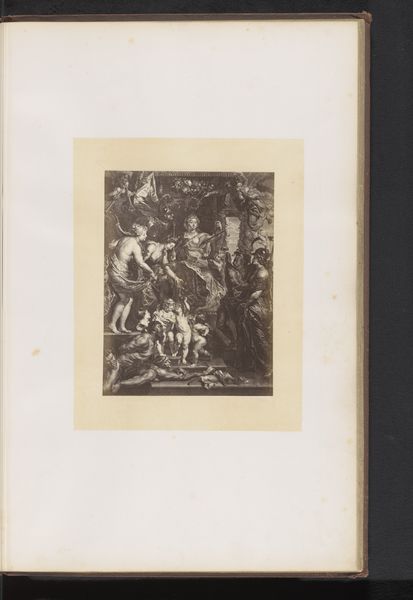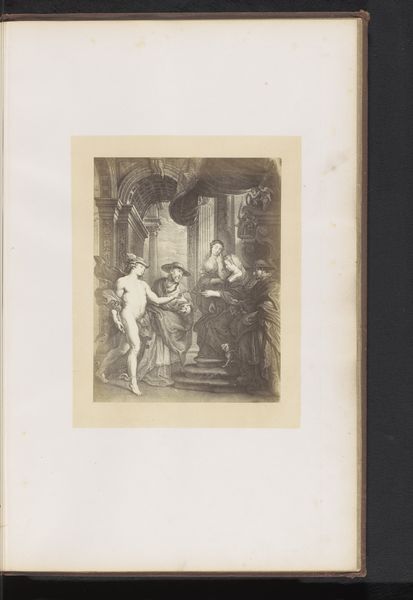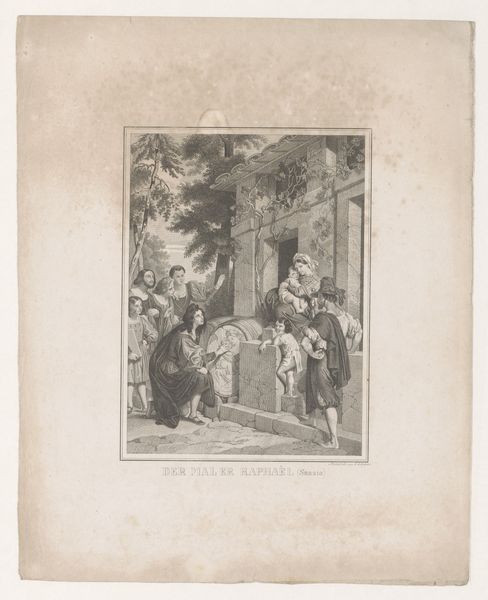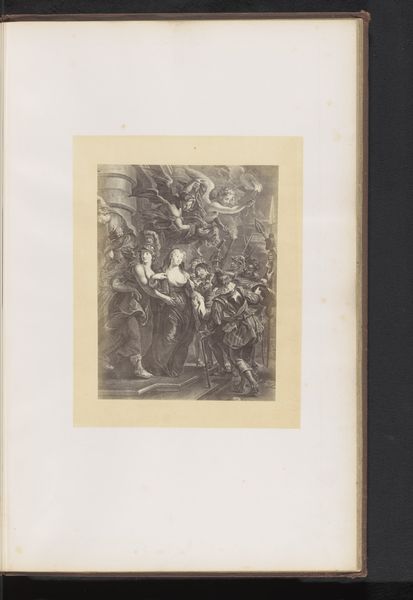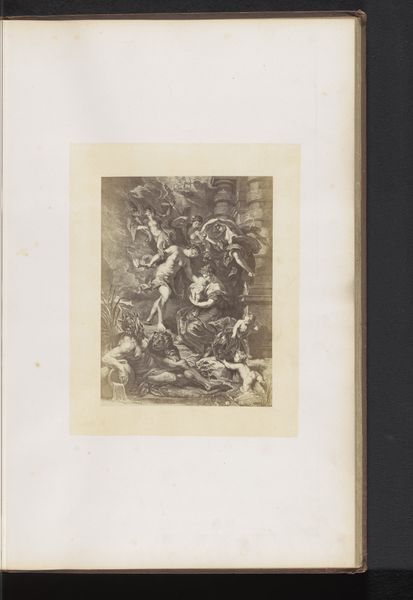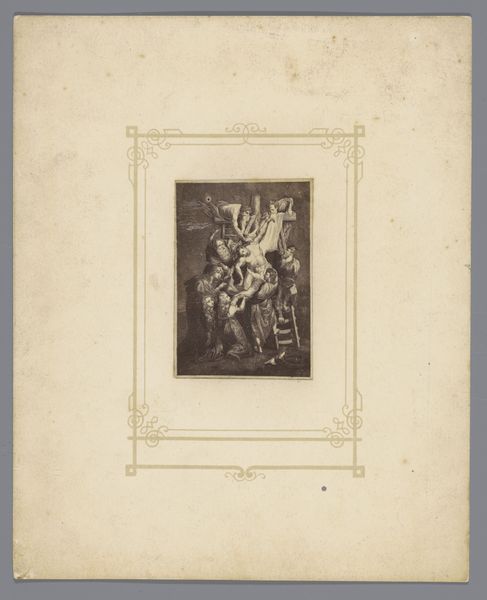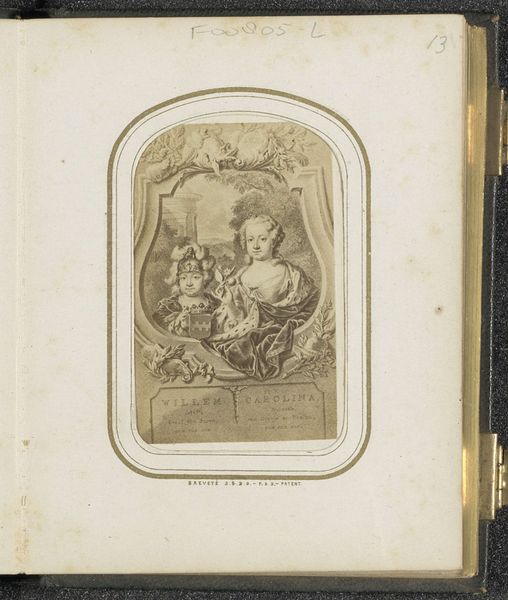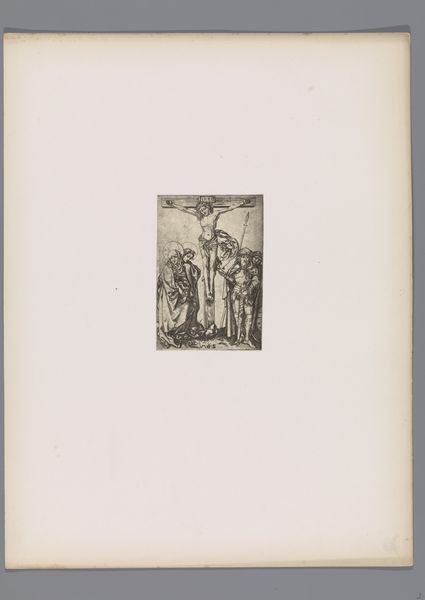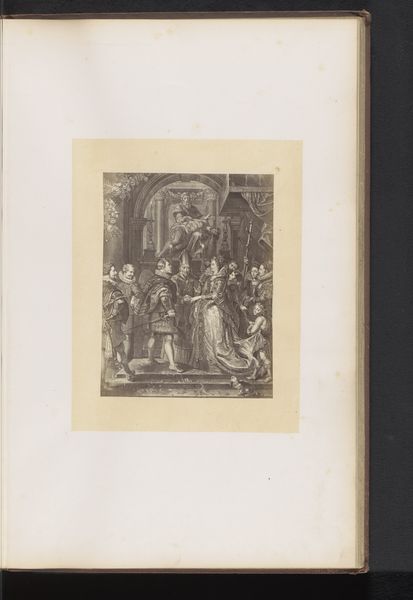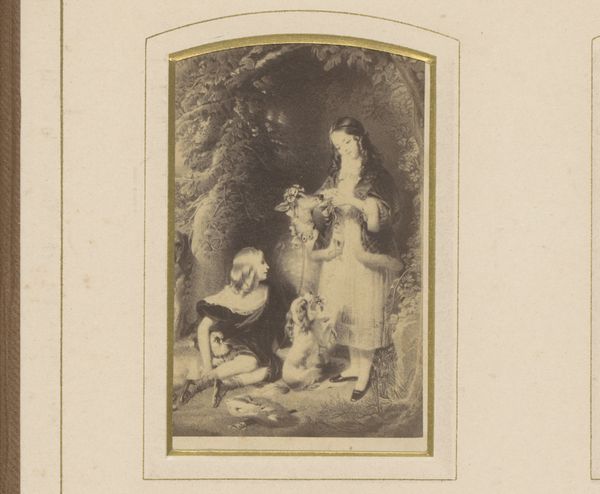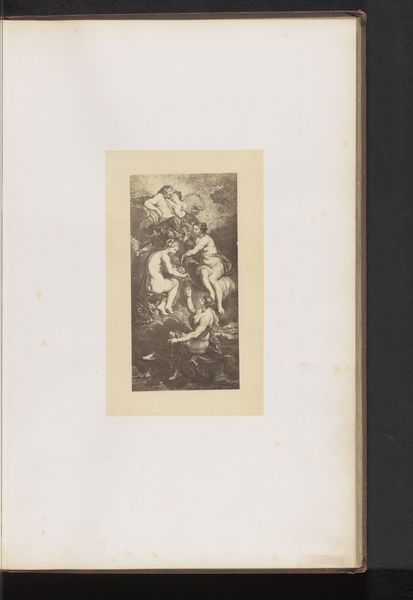
Fotoreproductie van Madonna del Trono door Fra Bartolommeo 1850 - 1900
0:00
0:00
fratellialinari
Rijksmuseum
photography, gelatin-silver-print
#
portrait
#
photography
#
gelatin-silver-print
#
history-painting
#
academic-art
#
italian-renaissance
Dimensions: height 81 mm, width 50 mm
Copyright: Rijks Museum: Open Domain
Curator: This is a gelatin silver print created sometime between 1850 and 1900 by Fratelli Alinari. The title is "Fotoreproductie van Madonna del Trono door Fra Bartolommeo"— a photographic reproduction of the Madonna del Trono by Fra Bartolommeo. It currently resides in the Rijksmuseum. Editor: It's intriguing; the sepia tones give it an aged, almost dreamlike quality. The composition appears quite formal and balanced, reminiscent of Renaissance paintings. Curator: Absolutely. Given its status as a photographic reproduction, we must consider the context of the mid-to-late 19th century. This period saw a burgeoning interest in making art accessible to wider audiences through reproduction techniques. It also reflects a specific power dynamic and accessibility concerning the cultural dominance of Italian Renaissance art and its distribution. Who could access the art and how did that reflect social structures of power? Editor: It makes you think about labor – the labor of Alinari Brothers in the studio versus that of Fra Bartolommeo. Also, consider the economic context: The Alinari brothers built a very lucrative industry on the craft of reproducing art and artifacts for popular consumption, thereby making their own living from Fra Bartolommeo's efforts centuries earlier. The shift in materiality and the photographic printing techniques, using gelatin silver to capture the image, shows evolving modes of production and the changing value associated with original versus reproduced artwork. Curator: Precisely. This form of photographic reproduction contributed to a shifting landscape of art appreciation and challenges our traditional notions of authorship, value, and art as something that only some people can access and control. Consider how photography enabled people, regardless of location or social standing, to engage with the Madonna. Editor: And we have to consider that the production and consumption of photographs itself required chemicals, silver, darkrooms – a whole material infrastructure that influenced who could participate. Looking at the textures and details of the silver gelatin print—there is almost a preciousness that underscores the status of photography during the late 19th century. This photomechanical reproduction becomes its own sort of precious object for contemplation. Curator: True. This work not only allows us to consider our traditional understanding of artistic originality, it becomes an artifact embedded within larger networks of power and gender during its time of making. What sort of devotional value does the artwork now perform given its newfound access? Editor: Examining this "Fotoreproductie" really highlights how art, material, and access intersect, revealing complex histories of craft, production, and social structures of looking and labor. It's not just about seeing a beautiful image; it's about seeing all the layers of making. Curator: Agreed. Analyzing Fratelli Alinari’s work shows the fascinating ways artworks connect historical and contemporary issues regarding access and how we determine the worth and status of images in a photographically-driven era.
Comments
No comments
Be the first to comment and join the conversation on the ultimate creative platform.

